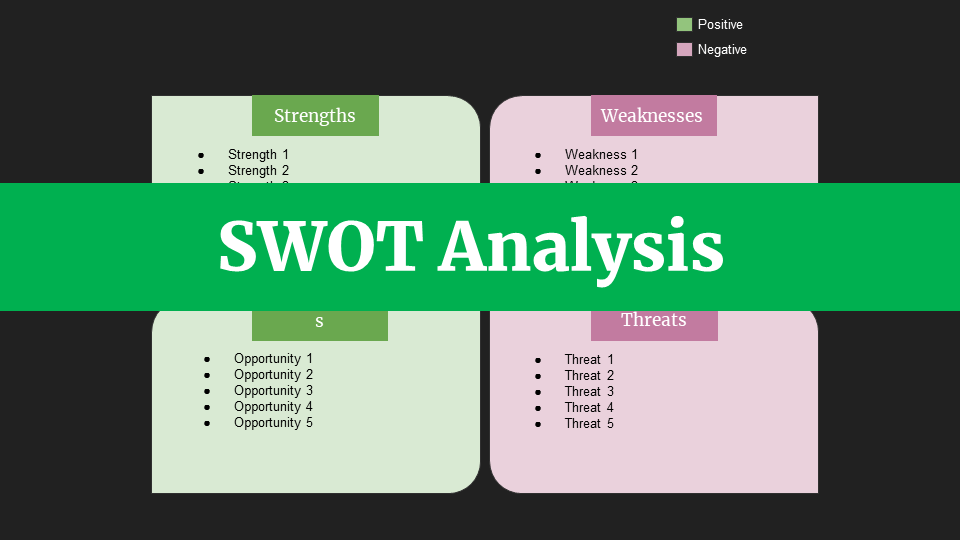SWOT Analysis is a popular technique or method for analyzing internal and external business environments in terms of strengths, weaknesses, opportunities, and threats for a project, product, or business. This tool was created by the management consultant Abert Humprey in 1966 (Atkinson, 2014) and it is an approach used by business analysts worldwide. For instance, a business analyst could use SWOT Analysis while preparing a business case for proposing a new project (Podeswa, 2009).
This technique allows you to make a competitive analysis of the product, company, or project by analyzing its Strengths, Weaknesses, Opportunities, and Threats. This helps to facilitate the discussion with stakeholders on what the business should put attention to, and what opportunities could be taken into consideration that will drive business growth. In addition, it allows the company to have a clear understanding of what things it does right, what needs improvement, and generate ideas on how to minimize threats (Atkinson, 2014). A variant of this technique is the TOWS analysis which is Treats, Opportunities, Weaknesses, and Strengths. The sections of the SWOT analysis are defined as follows:
- Strengths: The positive area of the business or product that gives the company a competitive advantage. Examples of these capabilities could be financial resources or a good market reputation (Cadle et al., 2017).
- Weaknesses: In what areas of the business do we need to improve or we don’t have a competitive advantage.
- Opportunities: What is happening outside the business that could be taken advantage of. For instance, Covid-19 was an opportunity for companies that create disposable masks.
- Threats: In this section is listed what outside the organization could affect the business directly. For example, law changes or new regulations that have been applied. Another example would be newer competitors opening doors close to the business.
The SWOT analysis is typically shown in a SWOT matrix that has four quadrants. But, it can be a document with a bullet point list for each category. You can download the SWOT PowerPoint version or online version of the SWOT Analysis.
References
Atkinson, S. (2014). The Business Book. Dorling Kindersley.
Cadle, J., Paul, D., & Turner, P. (2017). Business Analysis Techniques : 99 Essential Tools for Success. Bcs, The Chartered Institute For It.
Podeswa, H. (2009). The Business Analyst’s Handbook. Course Technology Ptr.


